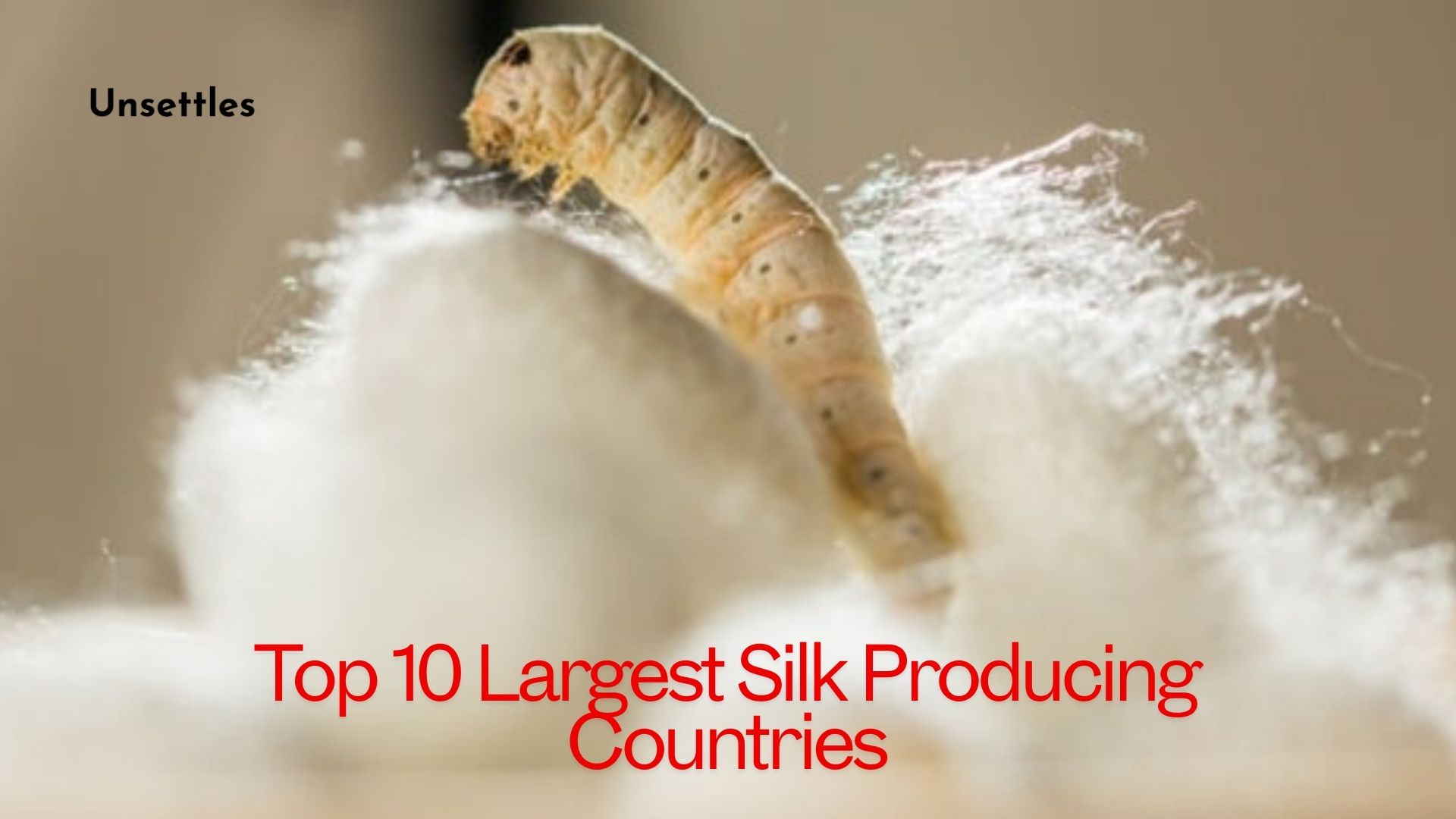Largest Silk Producing Countries: Imagine this: thousands of years ago, people figured out that tiny caterpillars could spin threads, and from that point on, the art of making silk was born. Fast forward to 2024, and we’re producing hundreds of thousands of metric tons of silk every single year. It’s pretty wild, right? One mulberry silkworm can spin a thread over a kilometer long, and you’d need more than 5,000 of these little guys just to make 1 kilogram of high-quality silk. That puts into perspective how massive the silk industry has become.
But have you ever wondered where all that silk comes from? Which countries are the biggest players in this luxurious industry? Well, buckle up, because today we’re taking a tour of the top 10 largest silk-producing countries in the world as of 2024. Let’s dive in!
1. China – 46,700 Metric Tons
China, the undisputed king of silk production, tops the charts with an astounding 46,700 metric tons of silk produced annually. Silk production is more than just an industry in China—it’s a tradition that goes back thousands of years. The ancient practice of sericulture (raising silkworms) has been passed down through generations. Today, China’s silk is a blend of rich cultural heritage and cutting-edge production techniques. When it comes to silk, China’s not just leading the game—it’s defining it.
2. India – 34,904 Metric Tons
Right behind China is India, producing 34,904 metric tons of silk each year. India’s silk story is one of diversity, with several types of silk being produced, including Mulberry, Eri, Tasar, and Muga. Each type has its own unique characteristics, and Indian silk is famous worldwide for its vibrant colors and intricate patterns. In India, silk isn’t just a product—it’s woven into the very fabric of its culture and economy, providing livelihoods for millions of people in rural areas.
3. Uzbekistan – 2,037 Metric Tons
Uzbekistan may not produce as much silk as China or India, but its 2,037 metric tons of annual output carry significant cultural weight. As a key stop on the historic Silk Road, Uzbekistan’s silk industry is steeped in tradition. The country is known for its bold, unique Ikat fabrics, and the production process is as much about preserving heritage as it is about creating textiles.
4. Vietnam – 1,067 Metric Tons
Vietnam is becoming a major player in the silk industry, producing 1,067 metric tons of silk each year. What sets Vietnam apart is the craftsmanship behind its silk. In places like the Van Phuc Silk Village, traditional silk weaving techniques have been perfected over centuries. Vietnamese silk is renowned for its fine texture and durability, making it a favorite among fashion designers and consumers worldwide.
5. Thailand – 503 Metric Tons
Thailand may produce a smaller quantity of silk—around 503 metric tons per year—but what it lacks in volume, it makes up for in quality. Thai silk, particularly from the Isaan region, is known for its luxurious feel and vibrant colors. The local dyeing techniques make Thai silk truly stand out. For the people of Thailand, silk is more than just fabric; it’s an integral part of their cultural identity.
6. Brazil – 373 Metric Tons
Brazil is an unexpected player in the silk industry, producing 373 metric tons annually. As a relative newcomer, Brazil has rapidly increased its silk output by adopting advanced farming techniques. The focus in Brazil is on producing finer silk threads, and they are quickly establishing a strong presence in the global silk market.
7. North Korea – 370 Metric Tons
Despite its isolation from much of the global market, North Korea produces 370 metric tons of silk each year. The country’s silk industry, centered around state-run facilities like the Kim Jong Suk Silk Mill, operates largely independently. While North Korea’s silk production may be shrouded in mystery, the quality of the silk they produce remains high, with a steady output despite economic challenges.
8. Iran – 272 Metric Tons
Iran has been producing silk for over 3,000 years, and today it produces 272 metric tons annually. Silk production in Iran is closely tied to the country’s rich cultural history, especially its famous Persian rugs, which often feature silk as a key component. Iranian silk is a beautiful blend of ancient techniques and modern advancements, maintaining its place in the global silk market.
9. Bangladesh – 41 Metric Tons
Bangladesh may be one of the smaller producers on this list, with an output of 41 metric tons, but its silk industry is growing. The country focuses on sustainable, community-driven production, often using traditional weaving techniques. As Bangladesh’s silk industry continues to develop, it’s making its mark with a focus on quality and sustainability.
10. Japan – 10 Metric Tons
Japan produces only 10 metric tons of silk annually, but its silk is renowned for its exceptional quality. Japanese silk, particularly used in traditional garments like kimonos, is the result of centuries of meticulous craftsmanship. While the volume may be small, the attention to detail in every strand of Japanese silk is unparalleled.
Conclusion
So there you have it—the top 10 silk producers in the world for 2024. From the rich traditions of China and India to the growing industries in places like Brazil and Bangladesh, these countries are keeping the ancient art of silk production alive and well. Whether it’s the quality or the sheer quantity, these nations are at the heart of the global silk trade, bringing one of the world’s most luxurious fabrics to life.
